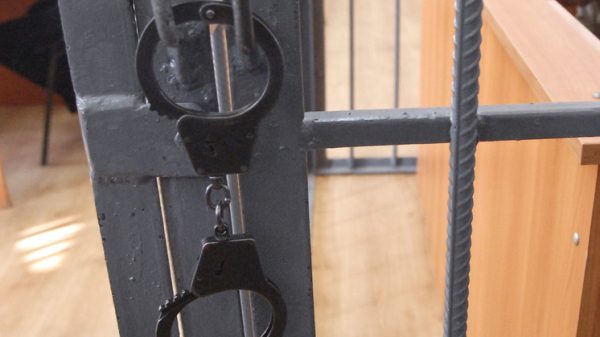Reconstruction of monument reveals data from the past
Scientists have used ancient bricks used to build the Babylon Gate in Mesopotamia to obtain data about the behavior of the Earth's magnetic field in the past. Thus, archaeologists learn not only about cosmic radiation, but also about geophysical phenomena. “We would be dead without the magnetic field,” experts say.

Thousands of years ago, Mesopotamian kings developed the habit of etching their name on baked clay bricks. Sennacherib, Tiglath-pileser, Nebuchadnezzar and other ancient monarchs could hardly have imagined that one day their habit of perpetuating themselves would pay off in the most unexpected way: helping scientists understand the internal structure of our planet.
Ancient building materials along the banks of Babylonian rivers are being used to extract data about the behavior of the Earth's magnetic field in the past. Scientists are figuring out how the planet is protected from cosmic radiation and how a geophysical phenomenon helps humanity survive. In addition, the identification of this type of information is similar to the specialist calculating the magnetic field strength since the creation of Babylon. This helps to use radiocarbon dating more accurately.
Although the science of archaeomagnetism has been around since the 1950s, two recently published studies have shown how it can be applied to Mesopotamia, one of the cradles of human civilization, and, in particular, to baked mud brick, a widely used building material there.
An examination by Tel Aviv University provides further evidence of a known but still unexplained magnetic anomaly that was observed in the Levant throughout much of the Iron Age.
The second paper, published in PLOS ONE, actually uses archaeomagnetism to refine the dating of the Ishtar Gate, a monumental complex that once welcomed visitors to the ancient capital of Mesopotamia, located near Baghdad, in modern-day central Iraq. Mesopotamia is the birthplace of modern civilization and has been under archaeological excavation for more than a hundred years.
“Archaeomagnetism, a relatively new method, has hardly been used in excavations, except in the north of the region,” explains Tel Aviv University professor Erez Ben -Yosef.
He adds that «since the historical record gives us a pretty good idea of when each monarch reigned, archaeologists could match the archaeomagnetic data from the bricks with the chronology of ancient Mesopotamia and thus obtain a diagram of the state of the magnetic field under each king.»
Ben-Yosef notes that this may be useful in the future for dating other artifacts that are not marked in this way and that, for example, cannot be associated with the organic remains needed for radiocarbon dating.
< p>Erez Ben-Yosef and his colleagues collected information on 32 bricks. The findings are now being compared with previous research in Jordan and Israel, which show that during the Iron Age, the magnetic field in the eastern Mediterranean fluctuated strongly and rapidly, reaching the highest intensity ever recorded, with values more than doubling exceeded today's.
Most scientists agree that the magnetic field originates in our planet's outer core, which begins about 2,900 kilometers underground and where the movement of molten metal creates a huge electromagnetic dynamo. But we don't know exactly why the field fluctuates in intensity and direction, or why its polarity sometimes changes, with the last change occurring about 780 thousand years ago.
These mysteries prompted Albert Einstein to describe the magnetic field as one of the greatest secrets of physics. In the modern world, the field has lost about 10 percent of its strength since measurements began less than 200 years ago, and the location of the magnetic north pole has changed rapidly.
The discovery of the Levant Anomaly may provide indirect confidence that the magnetic field can indeed fluctuate greatly over a short period of time, and this does not necessarily lead to a dire polarity reversal.
“It's not just about shedding light on the magnetic field and its strange and unique phenomena, but everything related to it,” adds Ben-Yosef. “Researchers can use this information to understand the inner workings of the Earth, mainly in the outer core and lower mantle. This is one of the few ways to find out what is happening so deep inside, 3 thousand kilometers below us.”
In addition, archaeomagnetism helps archaeologists. The Ishtar Gate, now housed in the Pergamon Museum in Berlin, was built of baked brick with a delicate blue glaze and decorated with bas-reliefs of animals symbolizing Mesopotamian deities. As the cuneiform inscription on the complex says, we already knew that it was built by Nebuchadnezzar II, who reigned from 605-562 BC and is infamous in Jewish history for the destruction of Jerusalem and the First Temple in 586 BC.
However, archaeologists have identified three distinct phases of the gate's construction, and it is unclear when the monument was built during Nebuchadnezzar's long reign or whether it was even completed during his lifetime, the PLOS ONE study reports. By comparing evidence from the bricks with previously well-dated magnetic information from the Levant, they found that the gate was likely built around 569 BC.
“This brings it closer to the end of Nebuchadnezzar's reign and reduces the likelihood of a connection with the conquest of Jerusalem, which occurred more than 15 years earlier,” the researchers conclude. According to archaeologist Ben-Yosef, there are still some doubts about the use of archaeomaghetism, partly because the method is destructive. However, the positive results obtained from the study of Mesopotamian bricks will likely help future research, according to the scientist's predictions.

























































Свежие комментарии